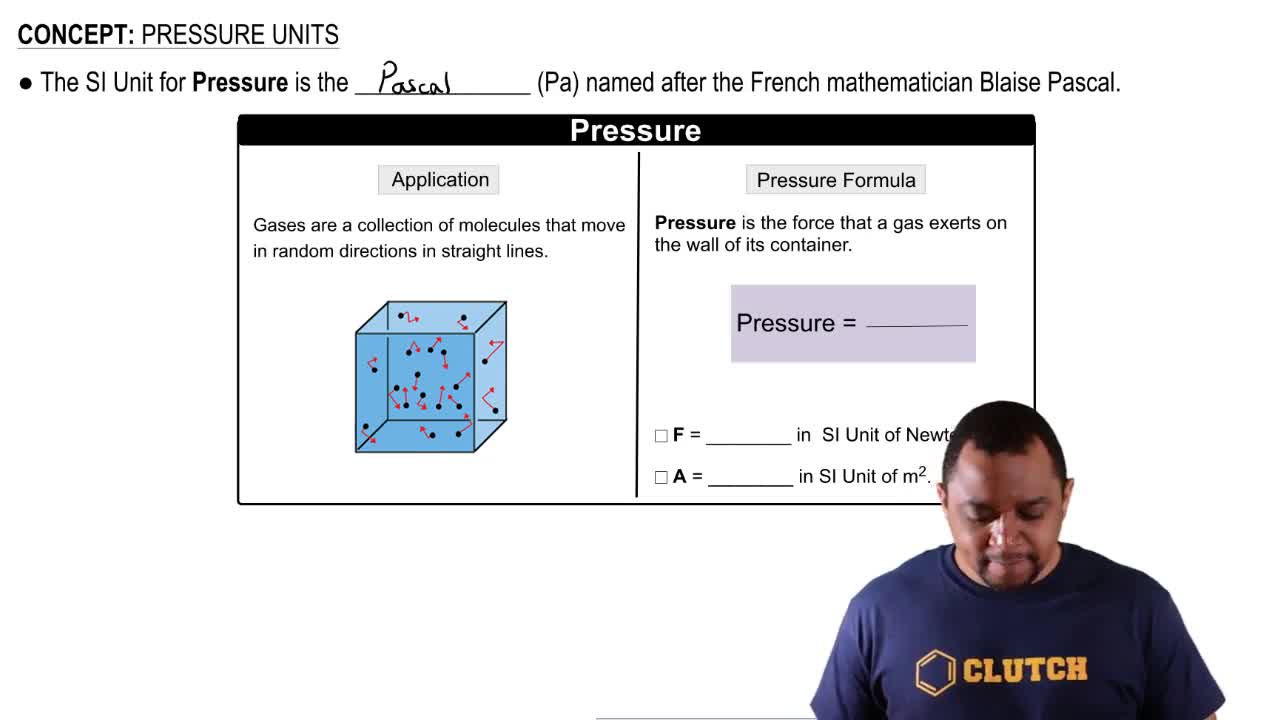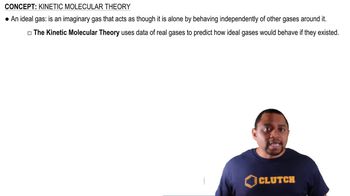Here are the essential concepts you must grasp in order to answer the question correctly.
Ideal Gas Law
The Ideal Gas Law relates the pressure, volume, temperature, and number of moles of a gas through the equation PV = nRT. In this context, it allows us to calculate the pressure exerted by hydrogen atoms in interstellar space, given their low density and temperature.
Recommended video:
Pressure Units
Pressure can be expressed in various units, including atmospheres (atm), pascals (Pa), and millimeters of mercury (mmHg). Understanding how to convert between these units is essential for accurately reporting the gas pressure in the context of the question.
Recommended video:
Kinetic Molecular Theory
Kinetic Molecular Theory explains the behavior of gases in terms of particle motion. It posits that gas pressure results from collisions of gas particles with the walls of a container, which is relevant for understanding how the low density and temperature of hydrogen in interstellar space affect its pressure.
Recommended video:
 Verified step by step guidance
Verified step by step guidance


